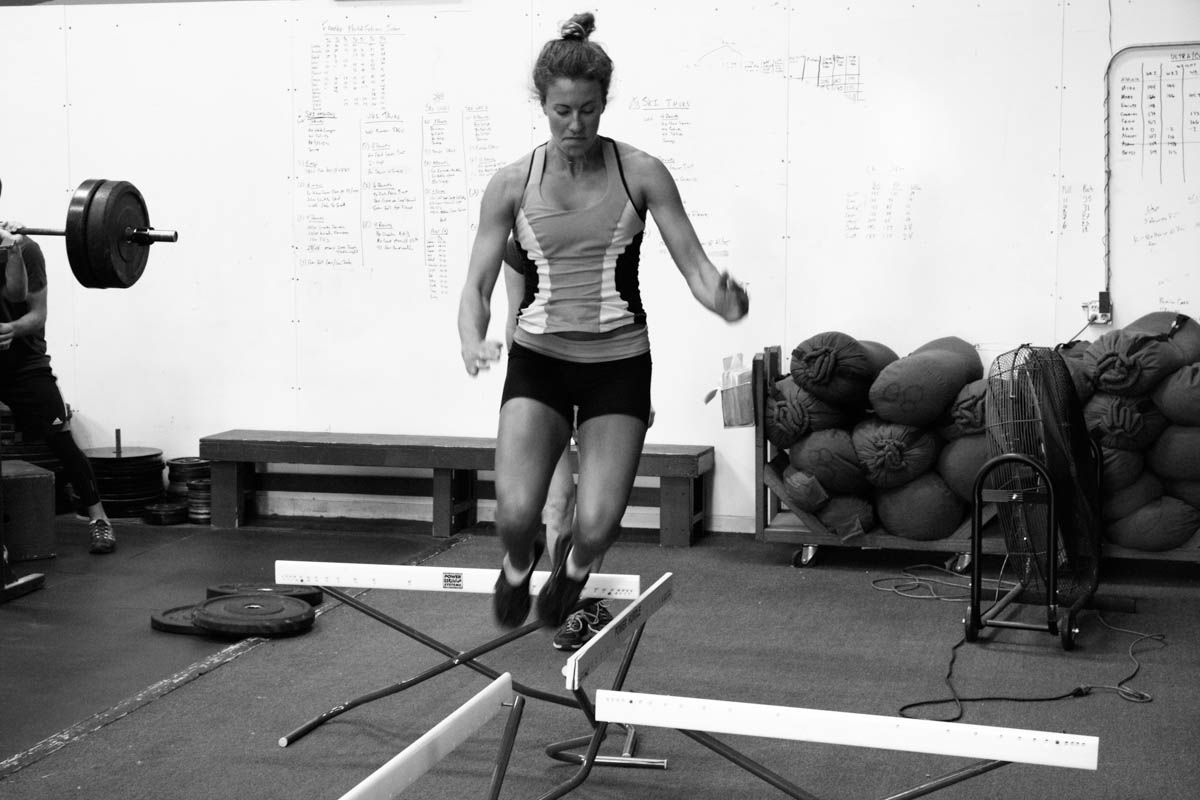
By Rob Shaul
We’re continually evolving and improving our programming as we learn, get athlete feedback, and grow. We begin an intense 7-week Dryland training cycle with local athletes next Monday. Below are the changes I’m making over last year’s cycle, and why.
1) Training Eccentric Leg Strength Heavy
When alpine skiing, gravity “bounces” the skier down the hill, and from a strength perspective, the skier’s legs absorb this impact, and fight gravity forcing them into the hill. Over the past season we’ve used Leg Blasters first, then moved to the Quadzilla Complex to train eccentric leg strength. Leg Blasters are unloaded, and the Quadzilla Complex is lightly loaded (30# for women, 50# for men). This year, we’re going to train eccentric leg strength heavy – with heavy eccentric back squats, and a new complex I’m calling the “Super Quadzilla.” The Super Quadzilla will use a barbell, heavier loads, and few reps than the original version.
2) Shoulder Strength Endurance and Durability
Shoulder injuries are a surprising risk in alpine skiing. Several of my pro skiers suffered separated or nearly separated shoulders in crashes last year, and the symptoms linger. In past dryland cycles, we’ve trained the upper body, but in a general way. This year, we’ll focus our upper body work on shoulder strength, strength endurance and mobility with an aim toward preventing impact-caused shoulder separations.
3) Hurdle-based Plyos
We’ll deploy both single leg hurdle plyos to build strength and ankle/knee durability, and two-leg forward and lateral hurdle hops for speed and quickness. As we work through the cycle, we’ll progress the height of the hurdles, not the reps – with the goal to train speed and explosiveness, not endurance. We’ll use our proven Leg Lactate circuits to train overall leg strength endurance.
4) Core Training Will Focus on Rotation and Anti-Rotation
We’ve learned from our Chassis Integrity work this summer, as well studied the actual core strength demands of skiing, and determined we should focus our core training on rotation and anti-rotation strength. Most these exercises will be from a standing or kneeling position.
5) Dropping Glute Medius Work

Jane Fondas and Mini-Band exercises have been a staple of our dryland cycles for several years, but not this year. We know these exercises work to increase glue medius strength in the isolated, gym environment, but wonder if this work transfers to the much more dynamic nature of actually skiing. We only have so much time with our athletes, and we continually aim to focus on gym-based training which best transfers to the real thing.
6) Including Backcountry Endurance Training
Several of my pro skiers have decided not to compete this year – in favor of backcountry filming work or ski mountaineering. There’s no lift to take them to the top of the run for these activities – so we’ll spend time doing step ups and trail running to build bootpacking and skinning endurance.
7) Initial Assessments
I’ll begin this year’s cycle with 1-2 assessment days which will include a 1RM back squat assessment, 3RM walking lunge assessment, some type of core strength assessment (still designing) and a 90-second Skier Lateral Box Hop for Reps (http://mtntactical.com/exercises/skier-lateral-box-hop/).
One major component of our past programs which won’t change this year is our leg lactate circuits. These will remain.
Finally, I’ll use our local athletes to “lab rat” these changes, and keep the ones that work when I update our Dryland Ski Training Cycle sometime after the first of the year so athletes not training in Jackson, can follow. The current Dryland Cycle for sale on the website and available for subscribers was last updated this past January.
